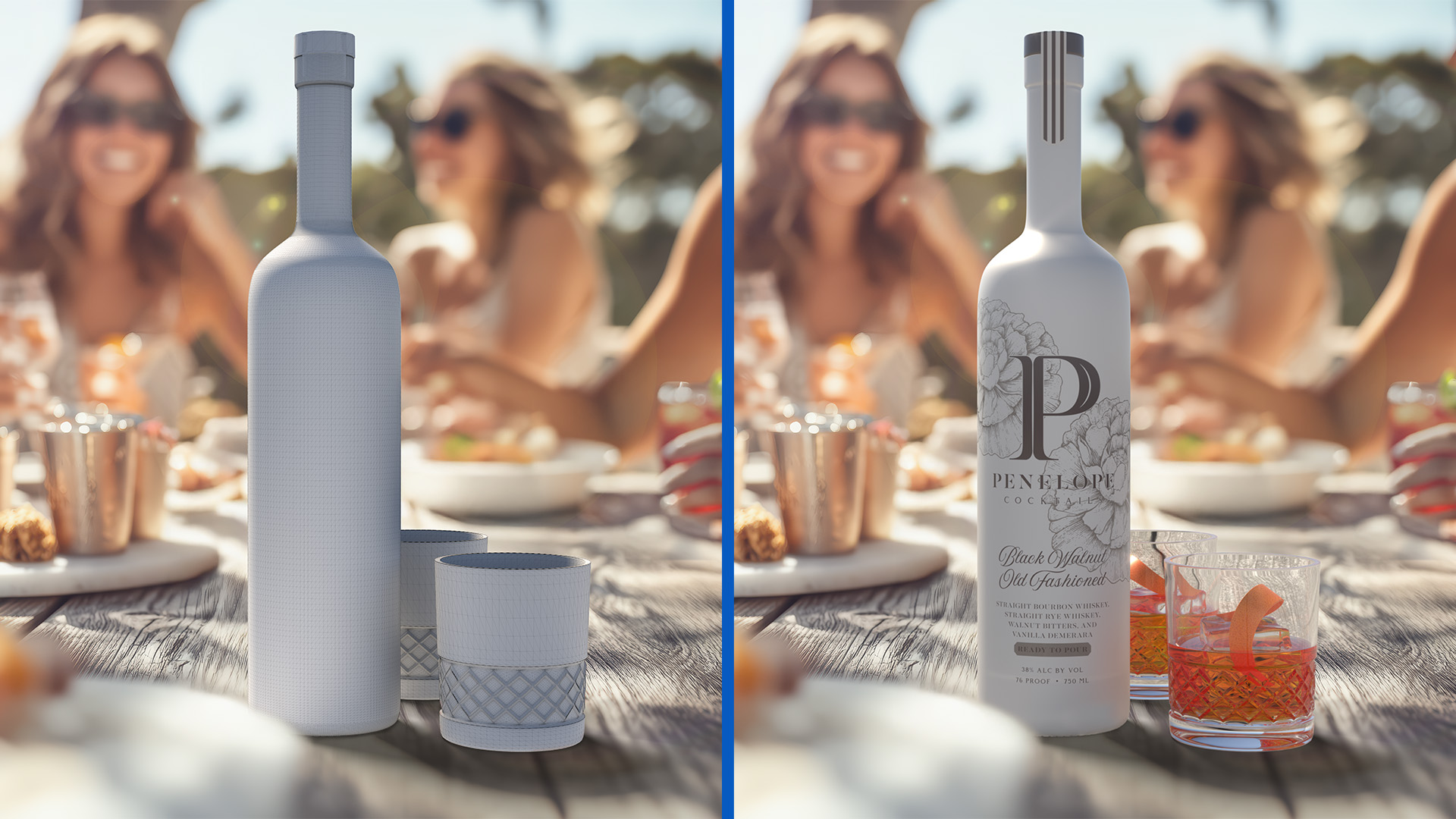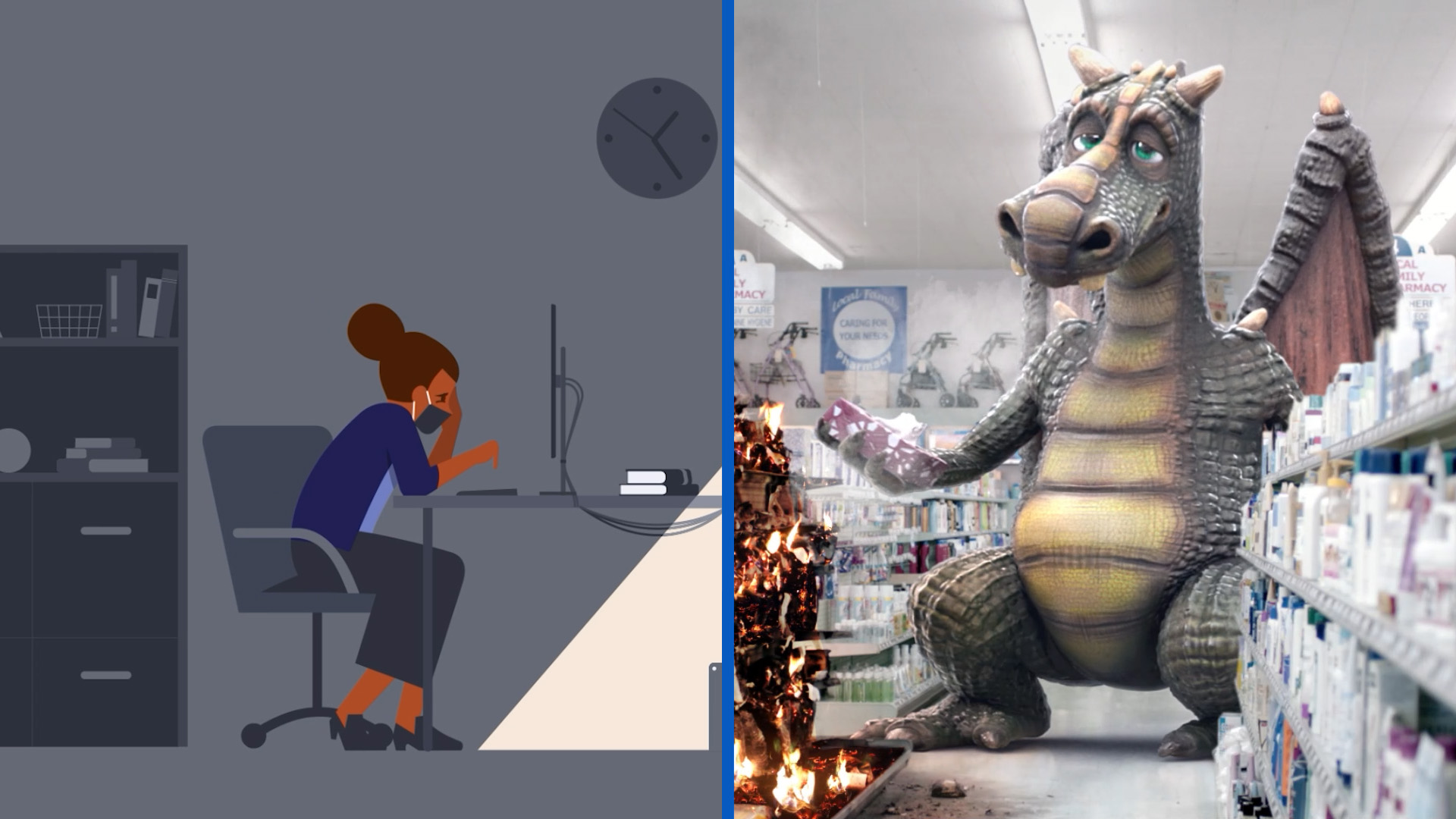Why You Need 3D Product Visualization

Why You Need 3D Product Visualization in E-Commerce
Great launches win with clarity, speed, and consistency, and 3D product visualization gives you all three by turning CAD or design intent into photoreal images and animations long before the finished product exists. Instead of waiting for manufacturing, shipping, and studio time, you can create launch-ready hero visuals, product films, print-quality stills, and product walkthroughs directly from a digital model.
In this guide, the animation experts at Aligned Media explain what 3D product visualization is, how it accelerates go-to-market plans, and why it’s becoming essential for every brand.
What is 3D Product Visualization?
3D product visualization is the creation of photoreal images and animations of a product using a digital model instead of a physical sample. Teams start with CAD files or design drawings, build or refine a 3D model, then apply materials, lighting, and cameras to render lifelike visuals. Because everything happens in a controlled virtual scene, you can show every angle, scale features up for clarity, “explode” assemblies, and stage the product in any environment well before manufacturing or shipping.
The outputs go far beyond a hero shot. From one master scene, you can generate web- and print-ready stills, product films, cutdowns for social, exploded views and callouts for features, and even loopable assets for trade show screens. If your team uses the same model across launches, you can continuously refresh content without reshoots or logistics.
Compared to traditional photography, 3D animation removes constraints. There is no studio booking, set build, or prototype handling, and late tweaks can be made directly in the scene. The result is a reusable asset system that supports faster launches, more consistent visuals across channels, and clearer storytelling for buyers who need to understand how something looks, fits, or works before they click "buy."
The Use Case for Investing in 3D Visualization Now
Launch cycles are shorter, channels are noisier, and buyers expect to understand a product instantly, often before a physical unit exists. 3D product visualization closes that gap by turning engineering intent into launch-ready assets early, so marketing, sales, e-commerce, and PR don’t have to wait on manufacturing. One master scene can feed your entire rollout: PDP stills, hero banners, paid ads, social teasers, trade show loops, and even instructional videos that are consistent across every touchpoint.
3D product visualization also gives teams control and scale. Need five colorways, two configurations, and regional packaging? Swap materials and labels digitally instead of re-shooting. Want to highlight a mechanism or internal component? Use cutaways and exploded views the camera can’t capture in real life.
Because everything is virtual, late-stage changes are safer and easier to achieve. The result is faster production, fewer reshoots, and a reusable library you can extend for refreshes and accessories.
Finally, 3D improves performance. Clearer visuals reduce uncertainty and objections, which helps conversion and can lower order returns. Rich angles and micro-stories (features, benefits, use cases) give you more creative variations for testing, so paid and PDPs optimize faster. Long story short, 3D product visualization isn’t just a prettier picture but a way to de-risk launches, move at the speed of digital, and compound creative ROI with assets that work long after launch week.
Using 3D Product Visualization in Launch Campaigns
Launching a new product? 3D visualization can be used at every touchpoint and every stage of your campaign, from pre-launch momentum building to post-launch social media messaging.
- Pre-Launch: Before your product physically exists, you can build momentum via 3D assets. With a digital model you can create photoreal hero images, teaser clips, and exploded views. Sales, public relations, and channel partners get a complete starter kit early, which means sell-in presentations, press assets, and retailer pages can be ready on day one. Product marketing can A/B test messaging and visuals with renders, refine callouts, and lock a creative direction down without waiting on prototypes or studio time.
- Launch Week: As your product launches, you can flood every touchpoint with consistent assets. One master scene can create exactly what each channel needs, provide hero images and product detail page stills, and be used for paid social cutdowns in multiple aspect ratios. Your 3D model can be tailored for YouTube pre-roll and connected TV, retail screens, trade show loops, thumbnails, and captions. Because lighting, materials, and camera moves are controlled in the digital scene, every placement shares a consistent look and feel, strengthening brand recognition while reducing creative work.
- Post-Launch: Even once your product is live, you can scale 3D variations and extend campaign life. When feedback or market demand calls for updates, 3D product visualizations allow you to iterate quickly, add a finish, adjust labeling, generate new angles, or build a how-to sequence without reshoots. The same model powers seasonal promotions, accessory launches, packaging refreshes, and education content. Over time you accumulate a reusable asset library, which lowers cost per creative, speeds future releases, and keeps your product story cohesive across channels.
The Benefits of 3D Product Visualization
3D product visualization is more than just a pretty asset: it changes how fast and how confidently you can launch your product. Here are the business outcomes teams see when they build campaigns from a master 3D scene.
Speed to Market
Rendering from CAD or design intent removes the bottlenecks of prototype shipping, studio scheduling, and physical set builds. Creative, e-commerce, and PR can begin crafting pages, ads, and sell-in decks while engineering is still finalizing details.
Because scenes are virtual, you can lock hero angles and callouts early, then update finishes or labels without starting over. This compresses the timeline between “design approved” and “campaign live,” which is critical for seasonal or competitive windows. The net effect is launch readiness weeks earlier, with fewer last-minute scrambles.
Cost Control
Virtual production reduces hard costs tied to locations, sets, crews, and reshoots, especially when variations multiply. If you need new colorways, regional labels, or packaging updates, those changes happen in the digital scene instead of on a new shoot.
The same efficiency applies to angles and environments: once the model and lighting are set, additional renders are incremental rather than a full production day. You also avoid prototype damage or shipping delays, which can cascade into overtime fees. Across a product family, these savings compound into a significantly lower cost per creative.
Conversion Lift
Clear, photoreal visuals reduce buyer uncertainty, which is a common drag on add-to-cart rates. Multiple angles, macro details, and exploded views help shoppers understand features and fit, lowering friction at decision time. Consistent lighting and material treatment also keep colors and textures true to expectations across channels.
With more precise visuals, PDPs can tell a richer story by pairing hero renders with annotated callouts and short loops that highlight benefits. In practice, that depth translates to stronger engagement signals and more confident purchases.
Omnichannel Reuse
One master scene feeds every touchpoint, from website and retail PDPs to paid social, YouTube/CTV, and email campaigns. Because assets are generated from the same model, your visual language stays consistent as you adapt aspect ratios and runtimes.
Teams can spin cutdowns, thumbnails, and stills without re-inventing the creative wheel for each channel. This also simplifies file specs, naming, and color management, as they all flow from one common source. The result is a scalable content engine rather than one-off deliverables.
Visual Consistency at Scale
When SKUs, finishes, and regional packaging all derive from a shared model and material library, discrepancies vanish. Marketing no longer worries that the blue on the PDP will be different from the brochure or the retail screen.
Updates also propagate reliably: change a texture or label once, then re-render the set for every channel. That consistency sets accurate expectations for buyers, which can reduce returns triggered by “not as described.” It also strengthens brand recognition, since the product reads the same everywhere it appears.
Why Trust Aligned Media for Product Visualization
Aligned Media has years of experience turning CAD files and design intent into a complete, launch-ready asset kit. Our fully in-house 3D pipeline protects IP, keeps quality consistent, and shortens feedback loops. Because scenes are built for reuse, your team can refresh finishes, labels, and configurations later without costly reshoots, extending the value of every project.
Our workflow is designed for speed and scale, supporting both on-site and fully remote collaboration. Whether you supply native CAD, drawings, or reference imagery, Aligned establishes a spec sheet, so marketing, e-commerce, and PR receive the exact deliverables each channel requires.
Elevate Your Product Campaigns with 3D Visualization
3D product visualization is more than just a creative technique; it’s a faster, cleaner, and more controllable way to launch. By turning CAD and design intent into photoreal images and animations, you can equip every channel with consistent assets before the first prototype ships, tell a sharper product story with angles and cutaways photography can’t capture, and keep costs predictable.
The brands that win launches use a master 3D scene to create hero films and PDP stills for the website, cutdowns for paid and social, loopable screens for events, and a reusable library that powers seasonal updates and future SKUs. The result is speed to market, lower production risk, stronger conversion, and a content engine that keeps paying off long after launch week.
If that’s the outcome you want, share your goals, channel needs, and any available CAD with Aligned Media. We’ll scope a 3D visualization plan so you can launch with a complete, consistent asset kit on day one. Contact our animation experts today to get started.
Other Blog Posts
Say Hi
We hope you’re as excited to get started on your project as we are. From short-form social media videos like Instagram Reels, TikTok videos, and YouTube Shorts to long-form content like high-end documentaries, we want to bring your creative vision to life.
As a full-service video production company, we are equipped to work with you during every single step of the video production process. This ensures a fast turnaround time and lower costs since no outsourcing to third-party content creators or video editing agencies is required.
When you want high-quality video content from professional editors who are personally invested in your project, drop us a line or stop by for a chat. Whether it’s a quick brainstorming session or a longer strategy meeting with our dedicated video editors, we’re always ready to create something amazing at pricing that works for you.
Let’s make your next video project one for the books. Contact Aligned Media today to get started bringing your vision to life with our personalized video editing services!

